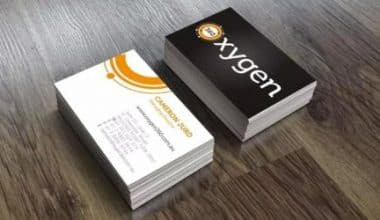If you’re like many people who Google what to do with their unwanted clothing, you’ve definitely started looking into thrifting or consignment. We’re here to clarify the distinction between a thrift store and a consignment business, and also give a review of the best online consignment stores in 2023
What Is a Consignment Store?
A consignment store is a sort of resale shop where items are displayed for a percentage of their original price. People bring in stuff and are paid a set amount once the merchandise sells in this retail arrangement. Clothing, household items, art, furniture, and even books can be sold at consignment shops. However, the most popular category is clothing.
What Is the Origin of the Term “Consignment”?
The meaning of the word consign has altered over time, but it essentially indicates giving something over to and into the care of another person. It is unclear where the word came from; it could be derived from the French word consigner or the Latin ‘consignare’, which means to mark with a seal.
Both derivatives represent what occurs when gently used clothes are consigned. Someone will give an item to a third party to sell on their behalf. Each store (or consignee) has its own set of rules, but normally a store will hold the items for a predetermined number of days and give the item’s owner (or consignor) 40-60% of the sale.
Clothing had to be in good condition four decades ago in order to be consigned. Being clean and in good selling, the shape is a critical component of this arrangement. The clothing may need to be in fashion or a specific style, depending on the store and its clientele.
While this sort of operation is most commonly associated with resale, consignment allows any retail space to carry inventory without incurring a significant financial strain. This method is also employed in tiny shops where merchants can sell their wares on consignment.
The Origins of Consignment Shops
There were thrift stores before there were consignment shops. There was a market for push carts before there were thrift stores.
Thrifting has long been stigmatized in the United States, but this is changing. According to historian Jennifer Le Zotte, who authored a book about reselling, this stigma was not just socioeconomic, but also ethnic.
From Goodwill to Grunge: A History of Secondhand Styles and Alternative Economies explores the tale of how the industrial revolution began to affect the way clothing was created. Clothing became more affordable as prices began to fall. Unfortunately, it also gave them the appearance of being disposable.
When Jewish immigrants recognized an opportunity, they began selling old clothing from push carts. However, anti-Semitism was widespread, and many people thought the garment was filthy. Those who did purchase clothing from pushcarts were regarded as tasteless, low-class, and impoverished. Newspapers published satirical allegories about the perils of purchasing from these establishments.
In 1897, religious organizations saw an opportunity to generate cash and jumped on board, altering the narrative and optics of the resale market. People might now give their clothing and feel good about doing something nice for society. The Christian ministry part provided credibility to the sales. The number of stores rose over the next few decades, and in the 1920s, Goodwill opened locations of department-store quality.
It wasn’t until the 1950s that consignment shops became popular. These targeted to upper socioeconomic clients who valued buying luxury clothing at a discount. There are now over 25,000 resale retailers in the United States.
Thrift Store vs. Consignment Store
Consignment stores are not the same as thrift stores, despite being a form of a secondhand store. Thrift stores accept donations, whereas consignment businesses compensate the owner for the products sold.
There is also a distinction in who owns the thing. While the proprietor of a thrift store relinquishes possession of the things, the consignor retains ownership of an article of apparel. The consignee or store is just providing space or a platform to sell from.
Another key distinction is the mission. Thrift stores are typically non-profit enterprises. Goodwill and the Salvation Army are two of the more well-known examples, with over 4,600 outlets between the two. They account for approximately one-fifth of all secondhand businesses.
Consignment shops, on the other hand, almost invariably operate for profit. Consigning clothing allows the consignor to earn money while keeping their unwanted stuff out of the garbage. Consignees can only pay for commodities they sell and manage a product inventory with little overhead for the goods themselves.
Consignment has the advantage of being a sustainable solution that also allows consignors to earn extra money. This is a strategy for shoppers to purchase newer, more trendy clothes in a way that does not belie the need to buy.
The Best Online Consignment Stores in 2023
- Best Overall: Poshmark
- Best For Closet Cleanouts: ThredUp
- Best for Brand-name Items: Tradesy
- Best For Luxury: The RealReal
#1. Best Overall: Poshmark
Why Did We Pick It?
Poshmark is one of the easiest and most efficient consignment stores for buying and selling used clothing online, with 70 million customers scattered across North America and a convenient, user-friendly mobile app.
Pros
- Shipping is completed quickly.
- Reliable seller and buyer review process
- A diverse range of brands and pricing points are available.
Cons
- It may take up to seven days to mail an item.
- Sellers get paid only after the buyer accepts the shipment.
Overview
Poshmark, with its large user base and simple interface, makes selling particular items from your wardrobe a breeze—and buying major goods at a discount even easier. Poshmark primarily sells clothing for men, women, and children. It also sells beauty, jewelry, accessories, and home decor from brands such as Michael Kors and Louis Vuitton.
Simply take a few photos, fill out the given form, and choose a price to sell your stuff. Poshmark gets 20% of the sale price (or a fixed charge of $2.95 for products under $15) whenever your item sells. Sellers don’t have to worry about shipping (Poshmark supplies a prepaid label) or credit card transaction costs in exchange; they simply drop the wrapped item off at USPS. Payment is transferred into their account once the buyer has received it.
Buyers can search by category, brand name, or keyword. Many sellers use the same titles as shops, making it simple to look for prices on an item you’re thinking about buying brand new.
Poshmark also functions as a social network: Follow “poachers” with similar likes to view new ads as they appear and to engage more intimately with the secondhand community.
Users can also “like” goods that catch their eye, allowing them to return to the ad later and signaling to the seller that they are interested in making a purchase. (While the app does not provide direct messaging, either the seller or the buyer can offer a discounted price for any item.) All sales include USPS one- to three-day Priority Mail delivery, which is invoiced to the buyer at the time of purchase for around $7.
#2. Best For Cleaning Out Closets: ThredUp
Why Did We Choose ThredUp?
ThredUp accepts bulk submissions and handles the process of photographing and selling each item for sale, making the eco-friendly company a preferred alternative for people wishing to unload larger loads of used goods.
Pros
- It is simple to submit many items at once.
- Shoppers benefit from low prices.
- Unwanted entries are recycled or given.
Cons
- There are no men’s clothes.
- Most sellers receive low rewards.
Overview
ThredUp, which was founded in 2009, describes itself as the “World’s Largest Consignment Store,” with millions of things for sale at any given moment, especially apparel for women and children. The brand emphasizes the significant environmental benefits of thrifting, with the goal of both educating consumers and providing a sustainable option for purchasing and selling.
Order a closet cleanout package, which includes a large shipping bag and a prepaid label, to sell on ThredUp.
After you fill the bag and submit it to ThredUp, each item is subjected to a 12-point check. ThredUp will photograph and post the item online once it has been determined to be suitable for resale on the marketplace. Sellers are paid a portion of ThredUp’s sales, starting at 5% for $5 items and growing with price, and can choose to receive payment in cash or product credit once the return window on the sold item has ended (typically about 14 days).
Overall, ThredUp is a convenient option for sellers trying to offload multiple items at once, especially if they aren’t bent on obtaining a specific amount of money. It can also be a worthwhile location for bargain hunters or those looking to make more environmentally friendly fashion selections. If you want to acquire the best price for a given item, you should check into different choices.
#3. Best For Brand Name Items: Tradesy
Why Did We Pick It?
Tradesy’s authenticity guarantee, price suggestions, and simple selling process ensure that both buyers and sellers are receiving a decent bargain on name-brand clothing.
Pros
- Name-brand merchandise is guaranteed to be authentic.
- Customer service is available seven days a week.
- For the majority of items, sellers are given a shipping kit.
- Use Tradesy’s statistics and analytics to help you decide your price.
Cons
- There is no men’s or children’s apparel.
Overview
According to Tradesy, the average woman has roughly $1,000 in resale value in her wardrobe, and its selling platform is a top alternative for sellers looking to cash in. While users take their own photos and list their own items, Tradesy provides assistance in small but important ways, such as sharing pricing suggestions based on company data, providing free shipping kits with prepaid labels and fresh packaging, and offering complimentary “image cleaning” services that allegedly sell your items faster.
Buyers have just as much to celebrate as sellers do when they advertise their things on Tradesy. Every item purchased through the platform is guaranteed to be authentic: Anything you return is reviewed by a professional, and if the vendor misrepresented the item in any way, you can get a refund. Sellers have three delivery options (including mailing it themselves), but shipping time estimates are publicly shown before purchase. Hence, the consumer knows precisely what they’re getting before they buy.
Tradesy’s community has something for everyone, with labels like Rolex, Chanel, and Hermes alongside more cheap ones like Gap and Abercrombie & Fitch, and its policies make it an excellent outlet for mid-level brand names. The site has also expanded into wedding attire: browse Vera Wang or BHLDN styles and save on your big day.
#4. The Best For Luxury: The Real Real
Why Did We Pick It?
The RealReal authenticates and values high-end things, with a focus on luxury watches, jewels, and designer clothing, to ensure that they sell for the greatest price possible—and quickly.
Pros
- Consultants are available to assist sellers in determining the worth of their possessions.
- All goods are authenticated, photographed, and priced by the company.
- The majority of products sell within 30 days.
Cons
- It results in lesser payments for less-priced things.
Overview
Online consignment stores may offer discounts and deals, but they are not necessarily inexpensive. RealReal, a retailer specializing in luxury watches, jewelry, and designer products, is proof of this. The RealReal works with consignors to sell their belongings at the best possible price, with a sophisticated online store as well as in-person shopping available to customers in 11 major U.S. cities.
Request a free consignment kit to sell with The RealReal. If you have questions regarding the procedure or your possible payout, you may schedule a video chat with a consignment manager or schedule a consultation for more information on luxury jewelry or timepieces. When you’re ready to sell, simply ship your stuff to The RealReal using free UPS drop-off, and the firm will handle the rest, photographing, authenticating, and displaying each item at a fair price for all parties.
The RealReal primarily benefits sellers of high-priced luxury items: Its commission structure favors watches worth $3,000 or more, with a top payment ratio of 85%. The rewards decrease from there, with rates as low as 40% for any item worth less than $145. However, the fees are justified by the outcomes, and the company claims that the majority of products are sold within 30 days. Consignors have the option of receiving payment via direct deposit or merchandise credit, with the latter receiving a 5% bonus.
Online consignment stores are fantastic methods to lessen your carbon footprint while still saving money on high-priced apparel and other items. They can also be a good source of extra revenue or a quick way to get rid of clutter
Why should you shop at a consignment store rather than a traditional online retailer?
Online consignment stores offer buyers to purchase high-end and designer goods at a reduced price, making them a cost-effective option for people of all tastes and budgets. It may also benefit the environment because consignment stores sell stuff that might otherwise end up in a landfill. Customers who shop secondhand are consciously rejecting fast fashion, which frequently uses unethical labor methods and poor environmental policies to keep costs low.
What Types Of Items Sell More On a Consignment?
Clothing is one of the most popular goods in an online consignment store, and it covers items for women, children, and men. Popular things include jewelry and designer goods (including designer apparel).
How Much Do Most Consignment Store Charge?
While the ratio varies, most online consignment stores take 20% to 40% of the sale price. Some companies charge a flat rate for lower-priced items. Many online consignment companies offer free shipping labels as well as bags or boxes in which to mail your products.
- Costco Business Center and Warehouses: All You Should Know
- COMPANY CAR: Uses, Insurance, Leasing, and Guide
- Walmart Thanksgiving Hours & Other Stores Open On Thanksgiving 2022
- The 19+ Best POINT OF SALE SYSTEMS FOR SMALL BUSINESS in 2022 (Updated)
- Best Business Ideas to Start Without Stress (40 Free Tips + Business Plans)

![[Revealed] 9 Steps to Selling Your Business in Australia](https://businessyield.com/wp-content/uploads/2021/10/Revealed-9-Steps-to-Selling-Your-Business-in-Australia-380x220.jpg)



